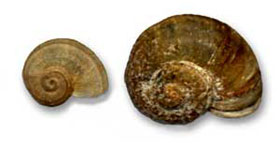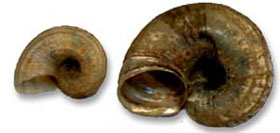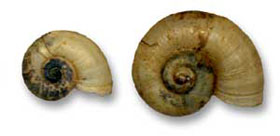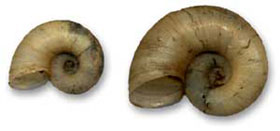Zoological excursions
Gastropoda
It is easy to find pond snails (Lymnaea) in any pond. They can be kept in captivity. Snails slide slowly on the walls of the aquarium with the help of wave-like muscle contractions of the foot located on the abdominal surface of the body. Glands of the snail excrete a lot of mucus to reduce the friction force. On the head there are triangular mobile horns with eyes at the basement, and a narrow oral fissure on the abdominal side. Snails feed on algae scraping them from the plant surface with a horn radula, which is located in the buccal mass. Some species feed on corpses of aquatic animals.
The pond snail hides its body inside the spiral elongated shell of dark brown colour. If you take the snail out of the water, it draws its foot and head into the shell. The opening where the snail draws its body is called a shell aperture, which is opened to the right. Mucus excreted by a pond snail helps the snail to remain on the water surface where the pond snail automatically comes to the surface as soon as it detaches from the leaf of the aquatic plant. The snail comes to the surface for breathing with a lung located on the right side of the body. Such snails are called lung snails.
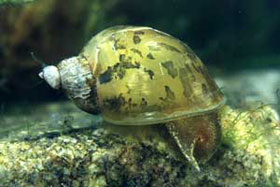
Pond snail (Limnea sp.)
|
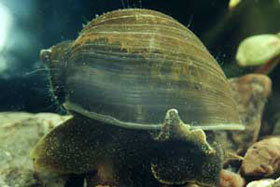
ПPond snail (Limnea sp.)
|
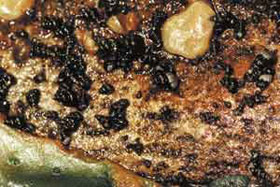
Aggregations of Baikal molluscs on the stone
|
The fauna of Lake Baikal consists of 32 species of bivalves and 148 species of gastropoda. Baikal molluscs, as a rule, are of small size with a thin and fragile shell. Molluscs seldom inhabit the surf belt of Lake Baikal. In abundance they can be met at depths from 2-3 to 15-20 m on the stones covered with algae, as well as on the sandy soils enriched with organic matters. Gastropoda scrape detritus. They play a significant role in biological processes of benthic cenoses of Lake Baikal. Faeces of molluscs cause silting of hard soils, which creates specific conditions for habitation of worms and other organisms. Fish feed on molluscs very seldom.
Benedictia baicalensis is the most common and numerous mollusc. It has a large thin-walled shell (20-24 mm) with 5 whorls. There is a knoll on the last whorl. The shell is earlike with a wide aperture.
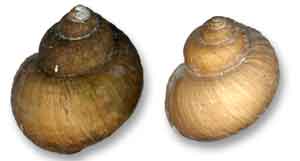
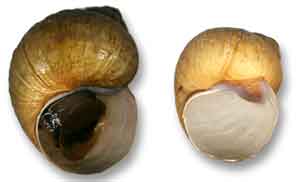
Benedictia baicalensis
|
Megalovalvata piligera and M. baicalensis are also in abundance in Lake Baikal. The first has a shell of 7-10 mm in diameter. There are spiral carinae or costae with scales along the whorls. There are no spiral carinae in the second species. The shell height of this mollusc is 6-9 mm and the diameter – 10-16 mm.
Representatives of the family Baicaliidae are very numerous. The shell of these molluscs varies in size and shape and is richly ornamented with carinae, costae, knolls and fine spiral and reticulate striae.
The shell of Baicalia carinata is tower-shaped up to 16-24 mm high without costae or with light transversal folds. Teratobaicalia macrostoma has a widely conoidal shell of 7-11 mm high. It is of dark green colour with a gray coating and costae with hairs on them. The shell of Baicalia dybowskiana is 10-13 mm high, which is 3 times as much as the width. The longitudinal carina is clear-cut. There are 8-12 costae on the last whorl. The height of the awl-shaped shell in Godlewskia pulchella varies from 7 to 24 mm. The number of whorls is 9-16. They are slightly convex. The aperture is tetragonal.
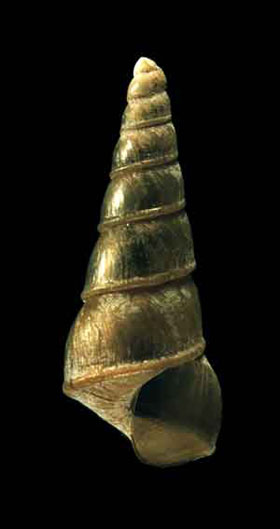
Baicalia carinata
|
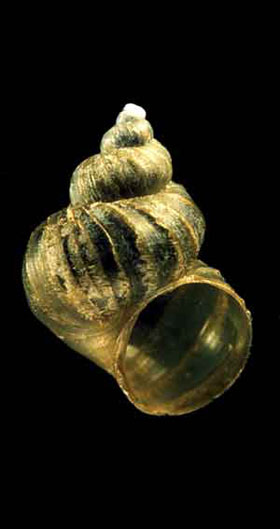
Teratobaicalia macrostoma
|
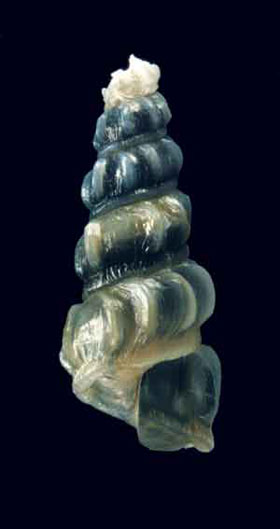
Baicalia dybowskiana
|
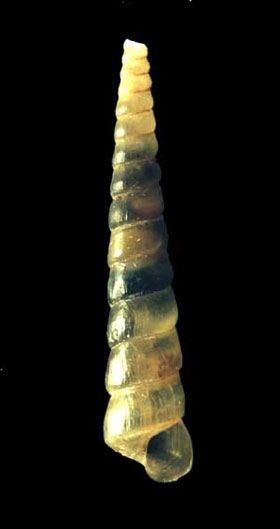
Godlewskia pulchella
|





